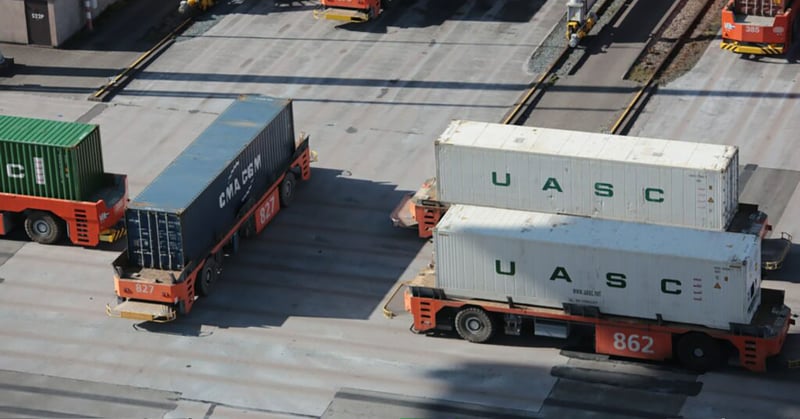Companies use transportation optimization for many purposes. The items to be transported can be packages, pallets, Roros (roll on - roll off), wood, raw material, refrigerated goods, liquid, people, etc. Things can be transported by land, sea or air.
However, the transport equipment varies according to the condition and the need, so that the right goods must be in the right place at the right time and transported with the right equipment. There are innumerable use cases, but mathematically, these are “only” the goals, variables and constraints that need to be fitted to serve the business need.
There are also many synonyms for transportation optimization which are commonly used in companies: shipment routing, computational logistics, delivery optimization, transportation optimization, fleet employment optimization, allocating orders to vehicles, using fixed assets, moving asset optimization, mobile asset optimization, route optimization - to mention some. However, in the same regard, it is all about the branch of logistics optimization, which aims to optimize operational transportation equipment, transportations and customer orders.
Business needs and opportunities
In general, transportation optimization is used mostly to improve a company’s efficiency and reduce/manage costs. Transportation optimization can easily be thought of as planning transportation outside the company’s walls, but it can also be applied to transportation inside the walls of a large company or factory.
The cost savings that can be achieved depend on the initial situation. Compared to the manual design process, savings of up to tens of percent can be achieved. Here, as in many other optimizations, the optimization algorithm matters. In terms of both performance and the quality of the result. It is good to realize that there is no single optimization algorithm that would solve all types of transport optimization problems.
In terms of transportation optimization, the savings are most often materialized in the amount of transportation equipment required, as well as in decreasing kilometers and time savings. We are living in the 2020s and companies are also paying an ever growing amount of attention to their societal and environmental responsibilities, in particular CO2 emissions. The benefits of optimization here are clear: less kilometers, simulation of vehicle maintenance and renewal, and emphasis on transportation for low-emission vehicles.
Significant savings are also achieved by reduced planning/design time. The most advanced companies also translate this into a business advantage, as after the introduction of optimization, personal dependencies decrease. Design/planning work can be shared among the team, and the know-how accumulated from it helps, for example, customer service to develop its own operating model and serve customers better.
The business needs of different companies range from planning in seconds to longer-term planning at the tactical and strategic level. There are businesses like taxi firms and lunch courier services that should get information about the next gig in seconds. In other companies, planning is done on a daily basis, while in some, standard routes are renewed once every 3 months or less.
Optimization can also be used for simulation. Here the mathematical optimization model is used as the digital twin of the real world. The model can be tested with different business volumes: new locations, changing equipment, volume growth, etc. and get results that help to make strategic and tactical decisions such as pricing or using new equipment.
Special business needs
Traditional uses of transportation optimization are related to delivery or pick-up and type of delivery use. These can also be combined with innumerable special needs, such as the needs related to the choice of equipment, where a certain customer can be visited only with a certain type of vehicle. Or taking delivery time windows into account.
In general, route optimization as a term is understood as a relatively trivial (so-called) ‘Traveling sales man’ optimization problem. However simply visiting different places is rarely enough - you usually also need to spend time arriving and taking or picking up stuff. In addition, the control of operations may involve the need to consider the further processing of the goods being transported, such as balancing the workload or storage space at the receiving end. In this case, the company, for example, picks up some of its own goods, which it cleans and takes to the next customer.
The need may also be related to staff workload management and job satisfaction, such as balancing drivers working weeks and days.
Trip merges that can be applied to taxi rides, for example, are also considered as a special business need. Taxi companies are constantly developing their operations and new business needs for trip merging can be found for the efficient transport of people and other things that can be picked up by a taxi.
Increase customer satisfaction with route optimization
For companies whose business involves transportation in one way or another, transportation-related customer satisfaction and customer service are key factors. Customers expect accuracy in delivery times and service levels. The driver must be in the right place at the right time.
Customers also appreciate the freedom of choice so that one can choose the delivery time that suits them best and get their order delivered at the lowest possible cost. Perhaps in the future we will see services where the customer can choose the most climate-friendly transport with the least carbon emitting vehicle.
Taking all these aspects into account, optimization is a great tool for prescriptive analytics, as the soft constraints of optimization allow different factors to be weighted relative to each other, and the strict constraints preclude unwanted transport options.
Company-specific transportation optimization
If a transportation optimization solution is relevant to your business, you may also be interested in our second blog, which discusses transportation optimization solution selection.
